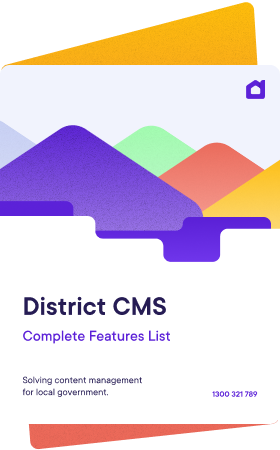As the digital landscape evolves, so do the standards that govern it. The Australian Government’s transition to the Digital Service Standard (DSS) 2.0 is a crucial step towards making government digital services more user-friendly, accessible, and secure.
This transition impacts not only government agencies but also the businesses that work with them, especially those in digital services and technology.
Understanding DSS 2.0
In its Data and Digital Government Strategy, the Australian Government offers a vision for 2030: the provision of simple, secure, and connected public services through world-class data and digital capabilities.
To support this vision, the Digital Service Standard promotes consistency across digital services and ensures they are accessible, secure, transparent, and meet the needs of people and businesses.
The Digital Service Standard (DSS) is designed to guide the creation of government digital services to ensure they are:
- User-Friendly
- Inclusive
- Adaptable
- Measurable
The Digital Service Standard 2.0 criteria
Following on from the initial release of the DSS in 2015, the new standard was released in December 2023, with a few changes. Most importantly, DSS 2.0 has reduced the original criteria from 13 to 10 to reflect the maturing digital landscape since 2015. In addition, the new standard provides a fresh emphasis on trust and digital protection, and a greater call to action for agencies to include accessibility and inclusion principles when designing digital services.
1. Have a Clear Intent |
Understand the user problem and balance it with government priorities. |
2. Know Your User |
Develop a deep understanding of user choices and behaviours. |
3. Leave No One Behind |
Design for inclusivity and accessibility. |
4. Connect Services |
Create interoperable services for a seamless user experience. |
5. Build Trust in Design |
Ensure services are useful, easy, inclusive, and stable. |
6. Don’t Reinvent the Wheel |
Use existing platforms and standards. |
7. Do No Harm |
Protect users' digital rights and privacy. |
8. Innovate With Purpose |
Innovate with clear intent, avoiding unnecessary changes. |
9. Monitor Your Service |
Continuously monitor and measure service performance. |
10. Keep It Relevant |
Respond to user feedback with impactful improvements. |
The transition to 2.0
By July 2025 all government agencies will need to ensure their digital services comply with DSS 2.0. To ease the transition, DSS 2.0 is being rolled out in a couple of phases. The initial phase begins 1 July 2024, and applies to new services owned by non-corporate Commonwealth entities. This includes public-facing digital services, staff-facing services, informational services, and transactional services. Any new digital/ICT-enabled proposals from 1 July 2024 must meet DSS 2.0 requirements.
Phase two applies to existing public-facing services owned by non-corporate Commonwealth entities. These services must be updated to meet the DSS 2.0 requirements by 1 July 2025 (or seek an exemption).
What are the implications for Government agencies and business?
So, what does the DSS 2.0 mean for government agencies and the businesses that work with them? While these groups will be familiar with the requirements of designing digital services to meet the exisiting Digital Service Standard, there will be some changes to meet 2.0.
For government agencies it will include a greater focus on accessibility and inclusivity, among other considerations:
- Accessibility: Adhering to WCAG 2.1 standards and conducting regular audits
- User-centred design: Engaging users throughout the design process
- Data security: Implementing enhanced security protocols
- Agile development: Using an iterative approach for continuous improvements
Businesses that work with government agencies will need to ensure their digital solutions are compliant with DSS 2.0 guidelines, and include:
- Focus on accessibility and UX: Developing accessible and user-friendly products.
- Security enhancements: Implementing robust security measures.
- Integration with government systems: Ensuring seamless integration with government systems using open standards.
Luckily, support is at hand!
To help your organisation make the transition to the new standard, District offers a powerful CMS that's specifically designed to meet the strict requirements of government agencies.
By leveraging District’s powerful CMS and engagement tools, government agencies and businesses can meet the stringent requirements of DSS 2.0 while delivering superior digital services.
To find out more about how District can help your organisation transition to DSS 2.0, talk to one of our friendly team today.




